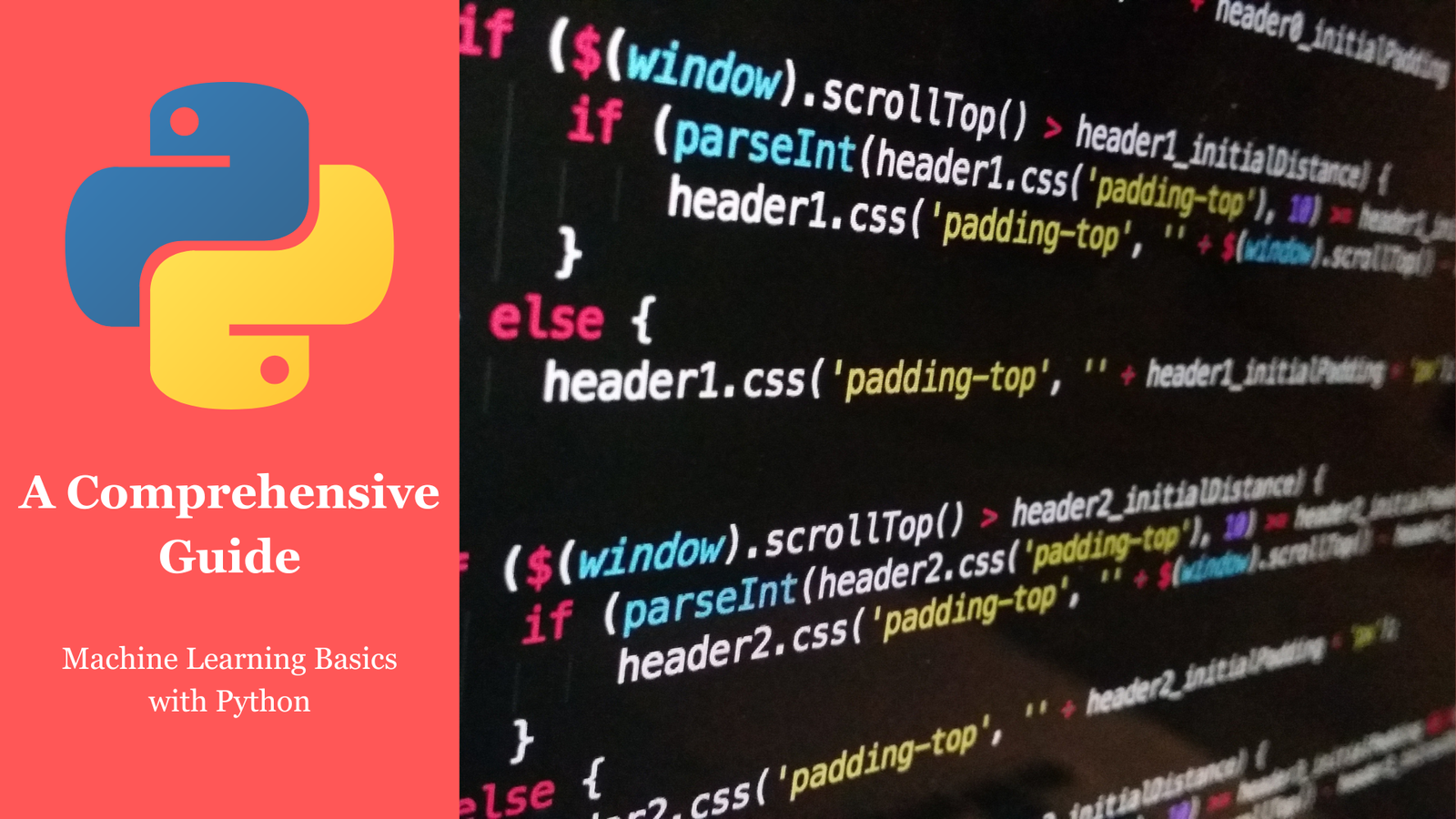Introduction
Machine Learning (ML) is transforming industries by empowering systems to learn and make decisions from data without explicit programming. From recommending movies to predicting stock prices, ML has countless applications. Python, with its simplicity and extensive libraries, is a top choice for learning and implementing ML.
This guide covers the fundamentals of ML, essential concepts, and a hands-on approach to building your first machine learning model. Whether you’re a beginner or brushing up on the basics, this blog will provide a solid foundation to dive deeper into ML.
What is Machine Learning?
Machine Learning is a branch of Artificial Intelligence (AI) that focuses on creating systems capable of learning from data and improving over time without being explicitly programmed.
Key Types of Machine Learning:
1. Supervised Learning:
Learning from labeled data to make predictions.
Example: Predicting house prices based on size, location, and other features.
• Algorithms: Linear Regression, Random Forest, Support Vector Machines (SVM).
2. Unsupervised Learning:
Finding patterns in unlabeled data.
Example: Grouping customers based on purchasing behavior.
• Algorithms: K-Means Clustering, PCA (Principal Component Analysis).
3. Reinforcement Learning:
Learning by interacting with an environment and maximizing rewards.
Example: Training an AI agent to play chess.
Applications of Machine Learning
1. Healthcare: Disease diagnosis and personalized treatment plans.
2. Finance: Fraud detection, risk assessment, and algorithmic trading.
3. E-commerce: Personalized recommendations and dynamic pricing.
4. Transportation: Self-driving cars and traffic management.
5. Social Media: Content recommendations and sentiment analysis.
Setting Up Your Machine Learning Environment
1. Install Python and Required Libraries:
Python 3.7+ is recommended. Install essential ML libraries:
pip install numpy pandas matplotlib scikit-learn seaborn2. Recommended Tools and IDEs:
• Jupyter Notebook: Interactive coding and visualization.
• PyCharm or VS Code: Ideal for larger ML projects.
Key Concepts in Machine Learning
1. Features and Labels:
• Features: Input variables (e.g., size, age, income).
• Labels: The output or target variable (e.g., house price, loan approval).
2. Training and Testing Data:
• Training data is used to teach the model.
• Testing data evaluates the model’s performance on unseen data.
3. Evaluation Metrics:
• Regression Problems: Mean Squared Error (MSE), Mean Absolute Error (MAE).
• Classification Problems: Accuracy, Precision, Recall, F1 Score.
4. Overfitting and Underfitting:
• Overfitting: The model performs well on training data but poorly on new data.
• Underfitting: The model fails to capture patterns in the data.
Building a Machine Learning Model
Let’s build a basic supervised learning model using Python to predict house prices.
Step 1: Import Libraries
import pandas as pd
import numpy as np
from sklearn.model_selection import train_test_split
from sklearn.linear_model import LinearRegression
from sklearn.metrics import mean_squared_error
import matplotlib.pyplot as pltStep 2: Load and Explore Data
Use a sample dataset to get started:
# Sample data
data = {
"Size (sq ft)": [750, 800, 850, 900, 950, 1000],
"Price ($)": [150000, 160000, 170000, 180000, 190000, 200000]
}
df = pd.DataFrame(data)
# Display the dataset
print(df)Step 3: Preprocess Data
Split the data into features (X) and target (y):
X = df[["Size (sq ft)"]]
y = df["Price ($)"]
# Split into training and testing sets
X_train, X_test, y_train, y_test = train_test_split(X, y, test_size=0.2, random_state=42)Step 4: Train the Model
Use Linear Regression to train the model:
model = LinearRegression()
model.fit(X_train, y_train)
# Display model coefficients
print(f"Coefficient: {model.coef_}")
print(f"Intercept: {model.intercept_}")Step 5: Test the Model
Predict house prices using the test set:
y_pred = model.predict(X_test)
# Evaluate the model
mse = mean_squared_error(y_test, y_pred)
print(f"Mean Squared Error: {mse}")Step 6: Visualize Results
Visualize the relationship between size and price:
plt.scatter(X, y, color="blue", label="Actual Data")
plt.plot(X, model.predict(X), color="red", label="Regression Line")
plt.xlabel("Size (sq ft)")
plt.ylabel("Price ($)")
plt.legend()
plt.show()Advanced Concepts
1. Feature Engineering:
• Transform raw data into meaningful inputs.
• Example: Converting categorical variables into numerical ones using one-hot encoding.
2. Regularization:
• Prevent overfitting by applying techniques like Ridge or Lasso regression.
3. Hyperparameter Tuning:
• Use GridSearchCV to find the best model parameters.
4. Cross-Validation:
• Validate model performance using k-fold cross-validation.
Best Practices for Machine Learning
1. Understand the Data: Perform Exploratory Data Analysis (EDA) to identify patterns and anomalies.
2. Scale Features: Use normalization or standardization for algorithms sensitive to scale.
3. Avoid Data Leakage: Ensure testing data is not used during training.
4. Document the Workflow: Maintain clear and organized code for reproducibility.
FAQs
1. What is the difference between supervised and unsupervised learning?
Supervised learning uses labeled data, while unsupervised learning works with unlabeled data to identify patterns.
2. Which Python library is best for machine learning?
scikit-learn is an excellent library for beginners and professionals alike.
3. What is overfitting in machine learning?
Overfitting occurs when a model performs well on training data but poorly on unseen data.
4. Can machine learning be used for time-series data?
Yes, algorithms like ARIMA, Prophet, and LSTMs are designed for time-series analysis.
5. What is the purpose of splitting data into training and testing sets?
Splitting ensures the model is evaluated on unseen data, simulating real-world performance.
6. What is cross-validation?
A technique to evaluate model performance by dividing data into multiple subsets.
7. How do I choose the right algorithm for my problem?
The choice depends on the problem type (classification, regression, clustering) and data characteristics.
8. What are common ML algorithms for beginners?
Linear Regression, Logistic Regression, Decision Trees, and K-Means Clustering are great starting points.
9. Is Python the only language for ML?
No, other languages like R, Java, and Julia are also used, but Python is the most popular.
10. What is the future of machine learning?
ML will continue evolving with advancements in AI, deep learning, and quantum computing.
Conclusion
Machine learning is a powerful tool that has revolutionized how we solve complex problems. By mastering the basics, like those covered in this guide, you can start building models that predict, analyze, and optimize. Python’s simplicity and versatile libraries make it an excellent starting point for your ML journey. Practice with datasets, experiment with algorithms, and watch your skills grow as you explore this exciting field!

